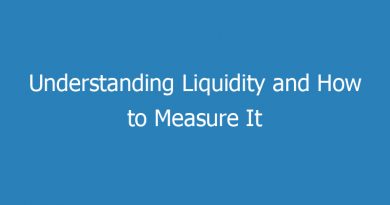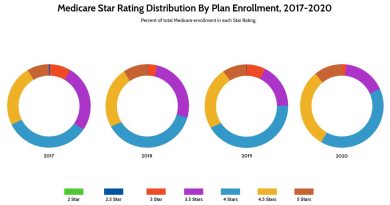Lorenz Curve
Contents
- 1 Lorenz Curve
- 1.1 What Is a Lorenz Curve?
- 1.2 Understanding the Lorenz Curve
- 1.3 Components of the Lorenz Curve
- 1.4 The Lorenz Curve and the Gini Coefficient
- 1.5 Advantages and Disadvantages of the Lorenz Curve
- 1.6 Lorenz Curve Example
- 1.7 Why Is the Lorenz Curve Important?
- 1.8 How Does the Lorenz Curve Measure Inequality?
- 1.9 Who Uses Lorenz Curves?
- 1.10 How Is a Lorenz Curve Calculated?
- 1.11 The Bottom Line
Lorenz Curve
What Is a Lorenz Curve?
A Lorenz curve, developed by American economist Max Lorenz in 1905, is a graphical representation of income or wealth inequality. The graph plots percentiles of the population on the horizontal axis according to income or wealth and plots cumulative income or wealth on the vertical axis.
Key Takeaways
- A Lorenz curve is a graphical representation of the distribution of income or wealth within a population.
- Lorenz curves graph percentiles of the population against cumulative income or wealth.
- Lorenz curves are used to measure inequality across a population.
- The Lorenz curve is used to calculate the Gini coefficient, a mathematical representation of inequality levels.
- Lorenz curves may be imperfect measures of true inequality.
Understanding the Lorenz Curve
In practice, a Lorenz curve is usually a mathematical function estimated from incomplete observations of income or wealth. The Lorenz curve is often accompanied by a straight diagonal line with a slope of 1, representing perfect equality; the Lorenz curve lies beneath it, showing the observed distribution.
The Lorenz curve can demonstrate unequal distribution in any system. The farther the curve is from the baseline, the higher the level of inequality. In economics, the Lorenz curve denotes inequality in the distribution of wealth or income. These are not synonymous since it is possible to have high earnings but low net worth, or low earnings but a large net worth.
A Lorenz curve usually starts with an empirical measurement of wealth or income distribution across a population. A graph of the data may be used directly as a Lorenz curve, or economists and statisticians may fit a curve to fill in any gaps in the observed data.
The closer the Lorenz curve is to the line of equality, the less inequality exists. The further the Lorenz curve is from the line of equality, the more inequality exists.
Components of the Lorenz Curve
The United States Federal Reserve collected net worth statistics from U.S. households and graphically depicted the distribution of wealth. The latest data collected by the survey of consumer finances is from 2019. Per the Federal Reserve, the bottom 50% of households hold just 1.5% of overall household wealth.
There are several important components to understand when analyzing a Lorenz curve:
- The x-axis represents the percentile of net worth ranking compared to other U.S. households.
- The y-axis represents the cumulative percentage of net worth of households.
- The line of equality is a 45-degree, upward-sloping line.
- The Lorenz curve is an upward-sloping curve.
- The Gini coefficient is the gap between the line of equality and the Lorenz curve.
Lorenz Curve, U.S. Household Net Worth (2019).
The Lorenz Curve and the Gini Coefficient
The Gini coefficient is used to express the extent of inequality in a single figure. It typically ranges from 0 to 1. Complete equality corresponds to a coefficient of 0. Complete inequality corresponds to a coefficient of 1.
A coefficient of 1 means that one person earns all the income or holds all the wealth. The Gini coefficient can theoretically exceed 100% in extreme situations, such as negative wealth or income.
The Gini coefficient is equal to the area below the line of perfect equality minus the area below the Lorenz curve, divided by the area below the line of perfect equality. The Gini coefficient measures the extent of inequality and can be used to compare different nations or countries.
For data sets demonstrating inequality, it may be difficult to analyze certain sections of data. For example, the graph above has a long left-skewed tail, making it difficult to examine changes in equality for this section of data.
Advantages and Disadvantages of the Lorenz Curve
Advantages of the Lorenz Curve
A Lorenz curve provides detailed information about the distribution of wealth or income across a population. It visually displays the variations from equality precisely at each percentile.
The underlying data for a Lorenz curve is necessary to calculate the Gini coefficient. Lorenz curves can be prepared for any geographical region, which may be important for assessing tax brackets.
The Lorenz curve maintains the anonymity of surveyed individuals and can demonstrate how public policy has changed inequality at various points along the curve.
Disadvantages of the Lorenz Curve
Constructing a Lorenz curve involves fitting a continuous function to incomplete data, which may not accurately represent the true distribution of income. The shape of the curve can be sensitive to the quality and sample size of the data and the mathematical assumptions used.
The Lorenz curve may not clearly demonstrate changes in inequality over time, even if two Gini coefficients are the same. Different areas of the Gini coefficient area may have equal size but vary in appearance.
- Visually depicts inequality across a population
- Assists in calculating the Gini coefficient
- May inform public policy changes and tax brackets
- Maintains anonymity of surveyed individuals
- Can demonstrate changes in inequality over time
- Sample data may not appropriately reflect the overall population
- May require extensive data collection
- May require estimation or preparer inference
- May mislead analysts due to varying shapes and sizes of the Gini coefficient area
Lorenz Curve Example
The curve above shows a continuous Lorenz curve for income distribution in Brazil as of 2020. At the 55th income percentile, the Lorenz curve estimates that the bottom 55% of the population takes in 22.39% of the nation’s total income. At the 99th percentile, the top 1% takes in 11.68% of Brazil’s income. The approximate Gini coefficient for Brazil in 2020 is around 0.5 or 50%.
Why Is the Lorenz Curve Important?
The Lorenz curve represents the level of economic inequality in society. As the curve moves away from the baseline, the level of inequality increases.
How Does the Lorenz Curve Measure Inequality?
The Lorenz curve visually represents the distribution of income or wealth in a society. The further the curve moves from the baseline, the higher the level of inequality.
Who Uses Lorenz Curves?
Government agencies use Lorenz curves to understand net worth and income distributions within their country. Lorenz curves inform governments about the impact of public policy and the establishment of tax brackets.
How Is a Lorenz Curve Calculated?
A Lorenz curve is calculated by fitting a curve to a relatively large sample size. There is no single universal curve formula, and the curve may look different for different data sets.
The Bottom Line
A Lorenz curve is a common method of visually analyzing inequality distributions. It graphically shows the distribution of a given data set and helps calculate the Gini coefficient to analyze inequality mathematically.



